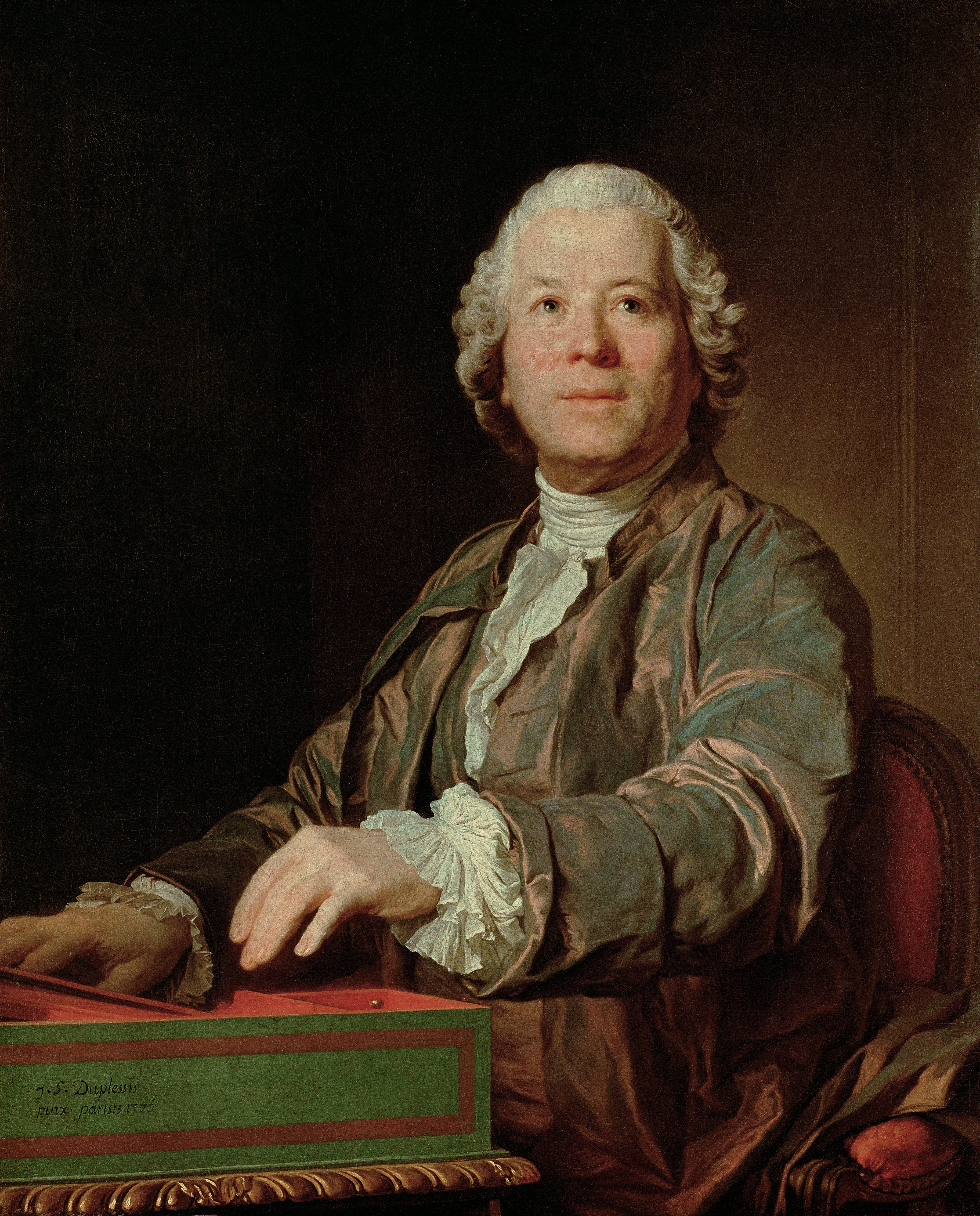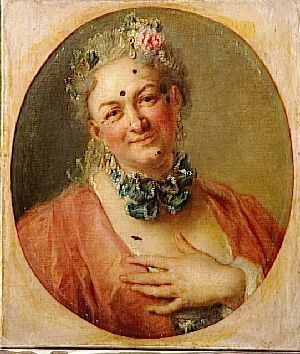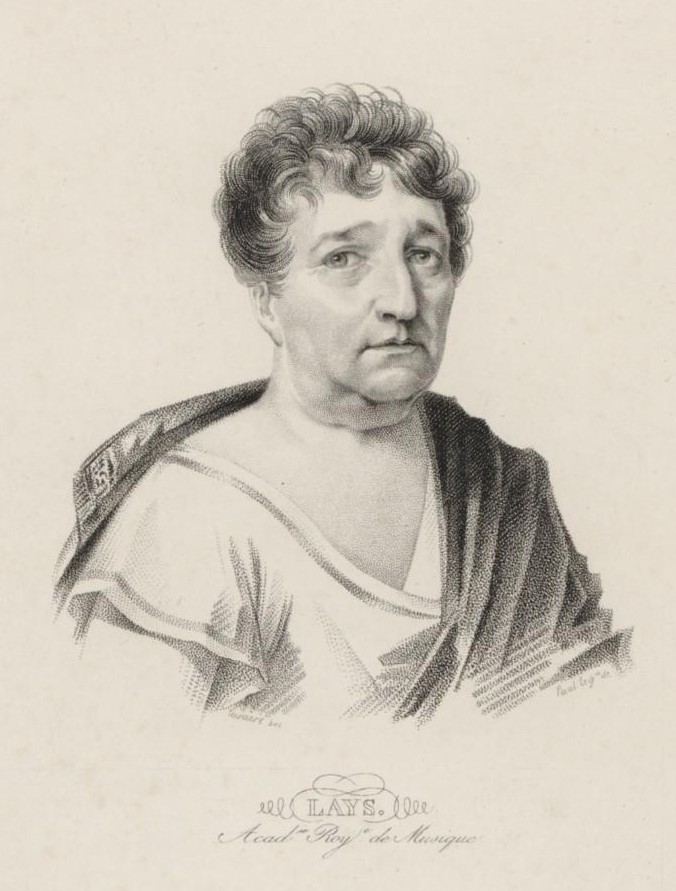|
Cora (opera)
''Cora'' is an opera in four acts by the French composer Étienne Méhul. The libretto, by Valadier, is based on the novel ''Les Incas'' by Jean-François Marmontel. It was the first opera Méhul wrote but the second to be performed, receiving its premiere at the Académie Royale de Musique (the Paris Opéra) on 15 February 1791. ''Cora'' was not a success and there were only four more performances (18, 20, 25 February and 4 March). Background In 1784 the Académie Royale de Musique held a competition for new libretti. From the 58 candidates the judges chose three winners: Chabanon's ''Le toison d'or'', Guillard's ''Œdipe à Colone'' and Valadier's ''Alonzo et Cora''. Chabanon's libretto was never set; Guillard's provided Antonio Sacchini with the text for his most famous opera (premiered in 1786); and Valadier's was handed to Méhul. Since arriving in Paris in the late 1770s Méhul had published two sets of keyboard sonatas and written or arranged vocal works for the Conc ... [...More Info...] [...Related Items...] OR: [Wikipedia] [Google] [Baidu] |
Christoph Willibald Gluck
Christoph Willibald (Ritter von) Gluck (; 2 July 1714 – 15 November 1787) was a composer of Italian and French opera in the early classical period. Born in the Upper Palatinate and raised in Bohemia, both part of the Holy Roman Empire, he gained prominence at the Habsburg court at Vienna. There he brought about the practical reform of opera's dramaturgical practices for which many intellectuals had been campaigning. With a series of radical new works in the 1760s, among them ''Orfeo ed Euridice'' and '' Alceste'', he broke the stranglehold that Metastasian '' opera seria'' had enjoyed for much of the century. Gluck introduced more drama by using orchestral recitative and cutting the usually long da capo aria. His later operas have half the length of a typical baroque opera. Future composers like Mozart, Schubert, Berlioz and Wagner revered Gluck very highly. The strong influence of French opera encouraged Gluck to move to Paris in November 1773. Fusing the traditions o ... [...More Info...] [...Related Items...] OR: [Wikipedia] [Google] [Baidu] |
Operas By Étienne Méhul
Opera is a form of theatre in which music is a fundamental component and dramatic roles are taken by singers. Such a "work" (the literal translation of the Italian word "opera") is typically a collaboration between a composer and a librettist and incorporates a number of the performing arts, such as acting, scenery, costume, and sometimes dance or ballet. The performance is typically given in an opera house, accompanied by an orchestra or smaller musical ensemble, which since the early 19th century has been led by a conductor. Although musical theatre is closely related to opera, the two are considered to be distinct from one another. Opera is a key part of the Western classical music tradition. Originally understood as an entirely sung piece, in contrast to a play with songs, opera has come to include numerous genres, including some that include spoken dialogue such as '' Singspiel'' and ''Opéra comique''. In traditional number opera, singers employ two styles of sin ... [...More Info...] [...Related Items...] OR: [Wikipedia] [Google] [Baidu] |
Stratonice (opera)
''Stratonice'' is a one-act ''opéra comique'' by Étienne Méhul to a libretto by François-Benoît Hoffman, first performed at the Théâtre Favart in Paris, on 3 May 1792. The plot is taken from '' De Dea Syria'' ("On the Syrian Goddess", attributed to Lucian) concerning an incident from the history of the Seleucid dynasty which ruled much of the Middle East during the Hellenistic era of the ancient world. Performance history ''Stratonice'' was a popular opera, receiving over 200 performances during Méhul's lifetime. On 6 June 1792 a parody, ''Nice'', by Jean-Baptiste Desprez and Alexandre de Ségur, appeared at the Théâtre du Vaudeville. In 1821 Méhul's nephew Joseph Daussoigne-Méhul wrote new recitatives for the opera's revival in Paris at the Académie Royale de Musique. Roles Synopsis Antiochus, the son of King Seleucus, is pining away yet he would rather die than name the cause of his disease to his father. The doctor, Erasistratus, suspects love is behind Anti ... [...More Info...] [...Related Items...] OR: [Wikipedia] [Google] [Baidu] |
Louis-Armand Chardin
Louis-Armand Chardin, called Chardiny (1755 – 1 October 1793) was an 18th-century French composer. Biography Born in Fécamp, Chardin made his debut at the Paris opera in 1780 as baritone and was finally received the following year. He stood out for the beauty of his voice and the purity of his singing. Nevertheless, he acted coldly and never knew how to enliven the stage. The role which made him most honoured was that of Theseus in ''Œdipe à Colone''. Chardin was a composer, and we know of him several small operas that he wrote for the , such as: ''le Pouvoir de la nature'', in one act, 1786; ''la Ruse d’amour'', in one act, 1786; ''le Clavecin'', 1787; ''Clitandre et Céphise'', 1788. In 1787 he had ''l’Anneau perdu et retrouvé'' performed at the Comédie-Italienne. He is also known for the music of a melodrama entitled: ''Annette et Basile''. Chardin was one of the first to set music to Florian's romances ''Estelle'' and ''Galatée''. His oratorio ''Retour de ... [...More Info...] [...Related Items...] OR: [Wikipedia] [Google] [Baidu] |
Adélaïde Gavaudan
Marie-Françoise-Adélaïde Gavaudan, called Mlle Gavaudan cadette and nicknamed Spinette, (1767–1805) was a French operatic soprano. Life Gavaudan is the daughter of Denis Gavaudan and Catherine Calmen, a member of the Gavaudan family, which reigns at the Opéra-Comique; sister of , Jean-Baptiste-Sauveur and .Kutsch and Riemens. In 1780, she was hired with her sister Émilie, by Madame Donvilliers, of the Petits Comédiens de . She was a chorister in 1778, at the Académie royale de musique. She already sang important roles, such as that of Angélique in the revival of ''Roland'' by Piccinni in October 1782. On 8 July 1782, she made her debut at the Comédie-Italienne, as Mme Saintclair, in ''La Fausse Magie'' by Gretry; then as Alix, in ''Les Trois fermiers de Dezède''; as Aline, in ''la Belle Arsène'', but she was not hired by this company. She was coryphée in 1784, at the Académie Royale de Musique. She became an assistant in 1786. She came to prominence in 1 ... [...More Info...] [...Related Items...] OR: [Wikipedia] [Google] [Baidu] |
Soprano
A soprano () is a type of classical female singing voice and has the highest vocal range of all voice types. The soprano's vocal range (using scientific pitch notation) is from approximately middle C (C4) = 261 Hz to "high A" (A5) = 880 Hz in choral music, or to "soprano C" (C6, two octaves above middle C) = 1046 Hz or higher in operatic music. In four-part chorale style harmony, the soprano takes the highest part, which often encompasses the melody. The soprano voice type is generally divided into the coloratura, soubrette, lyric, spinto, and dramatic soprano. Etymology The word "soprano" comes from the Italian word '' sopra'' (above, over, on top of),"Soprano" '' |
Bass-baritone
A bass-baritone is a high-lying bass or low-lying "classical" baritone voice type which shares certain qualities with the true baritone voice. The term arose in the late 19th century to describe the particular type of voice required to sing three Wagnerian roles: the title role in '' Der fliegende Holländer'', Wotan/Der Wanderer in the '' Ring Cycle'' and Hans Sachs in ''Die Meistersinger von Nürnberg''. Wagner labelled these roles as ''Hoher Bass'' ("high bass")—see fach for more details. The bass-baritone voice is distinguished by two attributes. First, it must be capable of singing comfortably in a baritonal tessitura. Secondly, however, it needs to have the ripely resonant lower range typically associated with the bass voice. For example, the role of Wotan in '' Die Walküre'' covers the range from F2 (the F at the bottom of the bass clef) to F4 (the F above middle C), but only infrequently descends beyond C3 (the C below middle C). Bass-baritones are typically divi ... [...More Info...] [...Related Items...] OR: [Wikipedia] [Google] [Baidu] |
Haute-contre
The haute-contre (plural hautes-contre) was the primary French operatic tenor voice, predominant in French Baroque and Classical opera, from the middle of the seventeenth century until the latter part of the eighteenth century. History This voice was predominantly used in male solo roles, typically heroic and amatory ones, but also in comic parts, even '' en travesti'' (see apropos the portrait reproduced below and representing Pierre Jélyotte made up for the female title role of Rameau's '' Platée''). Lully wrote 8 out of 14 leading male roles for the voice; Charpentier, who was an haute-contre himself, composed extensively for the voice-part, as did Rameau and, later, Gluck. The leading ''hautes-contre'' of the ''Académie Royale de Musique'' that created the main roles of Lully's operas, at the end of the seventeenth century, were Bernard Clédière (who started off as a ''taille'', a lower Tenor voice type) and Louis Gaulard Dumesny. Notable ''hautes-contre'' of the e ... [...More Info...] [...Related Items...] OR: [Wikipedia] [Google] [Baidu] |
François Lays
François Lay, better known under the stage name Lays (14 February 1758 – 30 March 1831), was a French baritone and tenor opera singer. Originally destined for a career in the church, Lays was recruited by the Paris Opéra in 1779. He soon became a leading member of the company, in spite of quarrels with the management. Lays enthusiastically welcomed the French Revolution and became involved in politics with the encouragement of his friend Bertrand Barère. Barère's downfall led to Lays being imprisoned briefly, but he soon won back the public and secured the patronage of Napoleon, at whose coronation and second wedding he sang. This association with the Emperor caused him trouble when the Bourbon monarchy was restored and Lays's final years were darkened by disputes over his pension, mounting debts, the death of his only son and his wife's illness. After a career spanning more than four decades, he died in poverty. Lays was famous for the beauty of his voice. One of the ... [...More Info...] [...Related Items...] OR: [Wikipedia] [Google] [Baidu] |
Baritone
A baritone is a type of classical male singing voice whose vocal range lies between the bass and the tenor voice-types. The term originates from the Greek (), meaning "heavy sounding". Composers typically write music for this voice in the range from the second F below middle C to the F above middle C (i.e. F2–F4) in choral music, and from the second A below middle C to the A above middle C (A2 to A4) in operatic music, but the range can extend at either end. Subtypes of baritone include the baryton-Martin baritone (light baritone), lyric baritone, ''Kavalierbariton'', Verdi baritone, dramatic baritone, ''baryton-noble'' baritone, and the bass-baritone. History The first use of the term "baritone" emerged as ''baritonans'', late in the 15th century, usually in French sacred polyphonic music. At this early stage it was frequently used as the lowest of the voices (including the bass), but in 17th-century Italy the term was all-encompassing and used to describe the ave ... [...More Info...] [...Related Items...] OR: [Wikipedia] [Google] [Baidu] |
Tenor
A tenor is a type of classical male singing voice whose vocal range lies between the countertenor and baritone voice types. It is the highest male chest voice type. The tenor's vocal range extends up to C5. The low extreme for tenors is widely defined to be B2, though some roles include an A2 (two As below middle C). At the highest extreme, some tenors can sing up to the second F above middle C (F5). The tenor voice type is generally divided into the ''leggero'' tenor, lyric tenor, spinto tenor, dramatic tenor, heldentenor, and tenor buffo or . History The name "tenor" derives from the Latin word '' tenere'', which means "to hold". As Fallows, Jander, Forbes, Steane, Harris and Waldman note in the "Tenor" article at ''Grove Music Online'': In polyphony between about 1250 and 1500, the enor was thestructurally fundamental (or 'holding') voice, vocal or instrumental; by the 15th century it came to signify the male voice that sang such parts. All other voices were ... [...More Info...] [...Related Items...] OR: [Wikipedia] [Google] [Baidu] |




